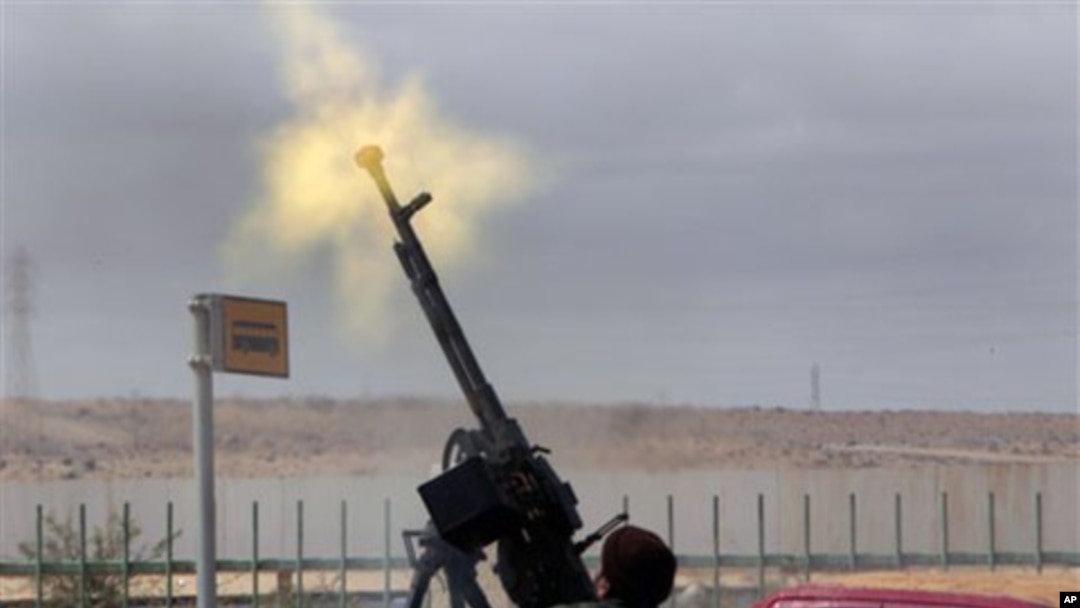The United Nations Security Council has approved a no-fly zone over Libya by a vote of 10 to nothing with five abstentions (Russia, China, Germany, Brazil and India). But experts say there are a number of questions that need to be resolved before a no-fly zone is put in place.
The U.N. Security Council resolution establishes the no-fly zone to protect civilians from attacks by the forces of Libyan leader Colonel Moammar Gadhafi. And it also authorizes member states to “take all necessary measures” to enforce the ban on flights. A no-fly zone is defined as airspace in which certain aircraft - especially military ones - are forbidden to fly.
The resolution was co-sponsored by Britain and France, with backing from the United States.
French Foreign Minister Alain Juppé told the council that Gadhafi’s forces are continuing their violent attacks on cities and regions.
"We cannot let these warmongers do this," he said. "We cannot abandon the civilian populations and victims of brutal repression. We cannot allow for legality and international morality to be struck down."
Russia was one of five council members to abstain. Moscow's ambassador Vitaly Churkin said there were questions raised by Russia and others during consideration of the resolution that were not answered.
"Questions which were both concrete and legitimate: questions regarding how the no-fly zone would be enforced, what the rules of engagement would be and limits to the use of force would be," he said.
Experts say there are other key questions that need to be resolved before a no-fly zone is put in place. These include will the no-fly zone cover all of Libya - or just over areas occupied by pro-Gadhafi forces? Who will be involved and for what length of time?
Retired U.S. Navy Captain Ben Renda, who flew aircraft patrolling the no-fly zone over southern Iraq in the late 1990s, voices a serious concern.
"When you are sitting at 1,000 feet, or 5,000 feet or 35,000 feet, figuring out who are the civilians and who are not civilians can be particularly hard because it’s a difficult thing to do from the get-go," he said. "Determining who are the rebel forces versus the government forces and on the assumption that mercenaries have also been brought in, figuring out which one of three buckets the good guys are in and the bad guys are in, will be exceedingly difficult - particularly if there is no ground presence, doing it strictly from the air will be challenging."
Renda says in theory, a no-fly zone could be put in place rather quickly.
"A no-fly zone assumes air superiority - so you need to make sure that there is nothing on the ground can shoot things down - so that would be the first step. So that depending upon the level of sophistication of the Libyan air defense, it will necessitate some type of minimization or neutralization of those defenses. Once that is assured, then you can move in with aircraft carriers or start doing over-flight operations depending on the allies’ capabilities and the types of assets that the U.S. wants to deploy in the area," he said.
Renda adds that when you begin a new military operation there is always the resource issue.
"Because every country’s military operates pretty leanly and the U.S. is no exception - and we’ve got already significant commitments," he said. "So the question is what are you going to divert into this area to help solve this problem - and if you are robbing Peter to pay Paul, at what cost? So there is always the question of resources and who can bring what to bear."
Renda says it will be interesting to see how an international military coalition can be put together, given that different countries have different sets of forces with different levels of training.
Questions Remain Concerning No-Fly Zone Over Libya

An anti-Gadhafi rebel fires on a government warplane flying overhead in Ras Lanouf, eastern Libya, March 9, 2011

